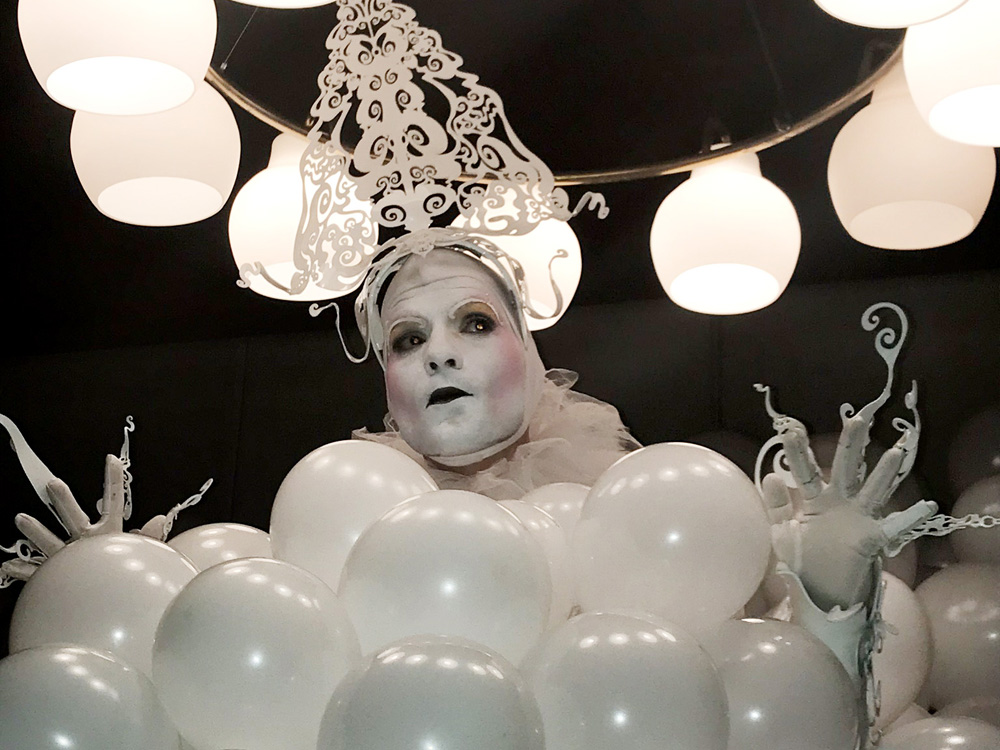
Since its inception is 2016, Tribeca Art & Culture Night has become a quarterly festival bringing together galleries and spaces attuned to emerging talent. Taking place in lower Manhattan with over 50 locations and open to the public, attendees can follow along with the map or mix-and-match in accordance to personal taste. The map contains over 30 stops, all along walking-distance from each other, making it a real opportunity to mingle with other attendees and meet the artists.

This fall, the festival took place on Wednesday, September 26th. Aside from art appreciation, the festival brought together numerous exhibitions, talks, performances, parties, workshops for drawing and hat making, and even salsa & swing dancing classes. Closing the event with an over-the-top balloon installation and after party at the Spring Studios, the event truly came full circle.
“The Festival strives to facilitate the access to Art and connects creatives beyond pre-established cultural categories. It aims to stimulate ideas, imagination, and innovation in the downtown communities.”
Some of the highlights include the special exhibition presented by SeeMe, “Art Takes SoHo,” shown at The Untitled Space. The show displayed 10 works of art selected from thousands of submissions. The exhibit was elevated by QUI Platinum Tequila and had over 400 guests pass through, making it one of the busier venues of the evening.


Another interesting facet of Tribeca Art & Culture Night was “ON CANAL.” Located at the intersection of Tribeca and Canal st., this is a neighborhood-wide initiative to give upcoming artists and brands an opportunity to connect with the downtown Manhattan community. Offering pop-up spaces to fresh talent, On Canal helps expose and give recognition to new artists while also offering non-virtual interaction with potential customers. Exhibit, “Wearable Media,” which was part of On Canal, fuses technology and fashion, offering interactive streetwear. A notable piece was a utility jumpsuit with LED lights: “The garment emits electrical current throughout the sensor points in the textile, intimately vibrating against our skin, letting our body sense the range, frequency and distance of NEAs. ”

“Tracing Obsolescence” at non-profit gallery Apexart NYC brought together four artists whose work is composed of recycled, disposed consumerism such as cell phones and urban post-industrial wastelands.
These artists bring awareness to overconsumption; some examples are monoprints from polluted waterways from NYC’s Water Creek, and video installation of the now-defunct glass bottle manufacturing process in Ghana.



